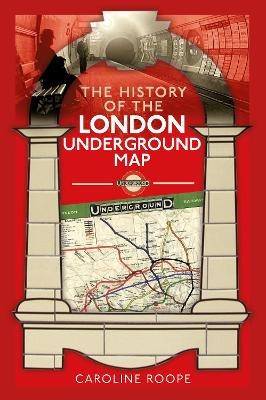
The History of the London Underground Map
Seiten
2022
Pen & Sword Transport (Verlag)
978-1-3990-0681-1 (ISBN)
Pen & Sword Transport (Verlag)
978-1-3990-0681-1 (ISBN)
Provides a new insight into the history of London Underground, from the viewpoint of its visual and cartographic heritage and against a backdrop of socio-political issues.
Few transportation maps can boast the pedigree that London's iconic Tube' map can. Sported on t-shirts, keyrings, duvet covers, and most recently, downloaded an astonishing twenty million times in app form, the map remains a long-standing icon of British design and ingenuity. Hailed by the art and design community as a cultural artefact, it has also inspired other culturally important pieces of artwork, and in 2006 was voted second in BBC 2's Great British Design Test.
But it almost didn't make it out of the notepad it was designed in.
The story of how the Underground map evolved is almost as troubled and fraught with complexities as the transport network it represents. Mapping the Underground was not for the faint-hearted - it rapidly became a source of frustration, and in some cases obsession - often driving its custodians to the point of distraction. The solution, when eventually found, would not only revolutionise the movement of people around the city but change the way we visualise London forever.
Caroline Roope's wonderfully researched book casts the Underground in a new light, placing the world's most famous transit network and its even more famous map in its wider historical and cultural context, revealing the people not just behind the iconic map, but behind the Underground's artistic and architectural heritage. From pioneers to visionaries, disruptors to dissenters - the Underground has had them all - as well as a constant stream of (often disgruntled) passengers. It is thanks to the legacy of a host of reformers that the Tube and the diagram that finally provided the key to understanding it, have endured as masterpieces of both engineering and design.
Few transportation maps can boast the pedigree that London's iconic Tube' map can. Sported on t-shirts, keyrings, duvet covers, and most recently, downloaded an astonishing twenty million times in app form, the map remains a long-standing icon of British design and ingenuity. Hailed by the art and design community as a cultural artefact, it has also inspired other culturally important pieces of artwork, and in 2006 was voted second in BBC 2's Great British Design Test.
But it almost didn't make it out of the notepad it was designed in.
The story of how the Underground map evolved is almost as troubled and fraught with complexities as the transport network it represents. Mapping the Underground was not for the faint-hearted - it rapidly became a source of frustration, and in some cases obsession - often driving its custodians to the point of distraction. The solution, when eventually found, would not only revolutionise the movement of people around the city but change the way we visualise London forever.
Caroline Roope's wonderfully researched book casts the Underground in a new light, placing the world's most famous transit network and its even more famous map in its wider historical and cultural context, revealing the people not just behind the iconic map, but behind the Underground's artistic and architectural heritage. From pioneers to visionaries, disruptors to dissenters - the Underground has had them all - as well as a constant stream of (often disgruntled) passengers. It is thanks to the legacy of a host of reformers that the Tube and the diagram that finally provided the key to understanding it, have endured as masterpieces of both engineering and design.
Caroline Roope is a freelance writer, specialising in social history and genealogy. She contributes regularly to Who Do You Think You Are? Magazine, Best of British, Discover Your Ancestors Periodical and Discover Your Ancestors Bookazine, writing on social history topics as diverse as Scalextric to Victorian cross-dressing. Following an MA with Distinction in Heritage Management she spent over ten years working in the heritage and museums sector, for small scale independent charities as well as the National Trust and English Heritage and is published academically in the International Journal of Intangible Heritage.
| Erscheinungsdatum | 06.10.2022 |
|---|---|
| Zusatzinfo | 32 colour illustrations |
| Verlagsort | Barnsley |
| Sprache | englisch |
| Maße | 156 x 234 mm |
| Themenwelt | Natur / Technik ► Fahrzeuge / Flugzeuge / Schiffe ► Schienenfahrzeuge |
| Naturwissenschaften ► Geowissenschaften ► Geografie / Kartografie | |
| Sozialwissenschaften | |
| ISBN-10 | 1-3990-0681-9 / 1399006819 |
| ISBN-13 | 978-1-3990-0681-1 / 9781399006811 |
| Zustand | Neuware |
| Informationen gemäß Produktsicherheitsverordnung (GPSR) | |
| Haben Sie eine Frage zum Produkt? |
Mehr entdecken
aus dem Bereich
aus dem Bereich
Das Beste aus Stadt und Land.
Buch | Softcover (2024)
VUD Medien (Verlag)
12,00 €
Buch | Softcover (2024)
hidden europe publications (Verlag)
26,15 €
die visuelle Chronik der Schienenfahrzeuge
Buch | Hardcover (2024)
DK Verlag Dorling Kindersley
34,95 €


